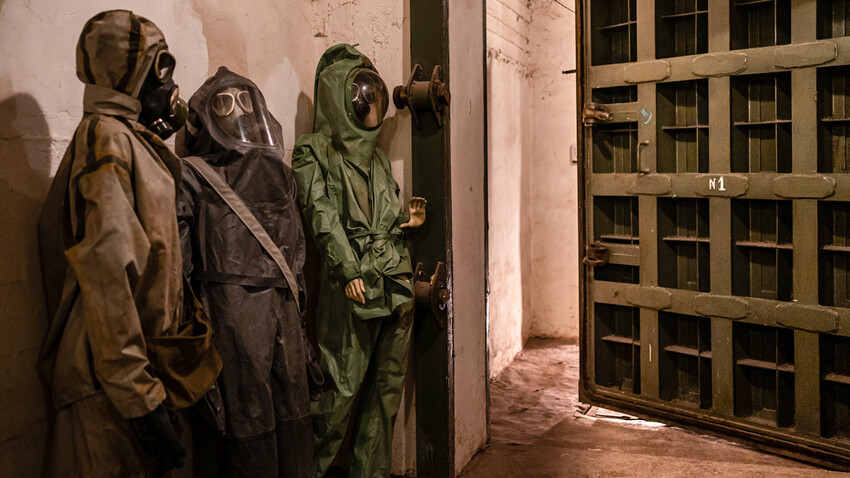
Walking down the street, you might not notice the museum right away — it’s a small building painted black with a sign that says ‘Underground Moscow’. Behind it are steps leading down to the former civilian fallout shelter of the ‘Mantulin’ Krasnopresnensky Sugar Refinery, built in 1972. The factory had long been closed and no one could find a need for the shelter. However, a few months ago, museum employees began to inhabit it: They restored its authentic appearance and began filling it with exhibits from their personal collections.
There are no exhibits hidden behind glass display cases — almost everything can be touched. For example, an impressive collection of items for civilian shelters — the exhibition is designed in such a way that viewers get a complete idea of how they are arranged and what it’s like to be in them. You can, for example, leaf through a 1972 issue of the Pravda newspaper, find out how special treatment was carried out for those coming from the contaminated zone, personally examine chemical and biological protection suits and even turn the lever of the air purification system with your own hands.
In addition to an impressive collection of gas masks, the museum also has a special protective chamber for small children. It looks like a giant sports bag with filters and windows.
With the help of a field chemical laboratory, you can identify toxic substances. Reagents with their smells are in special flasks with a label depicting a skull and crossbones: for example, the aroma of a baked apple indicates the presence of mustard gas.
Music players for records among various devices are also not for aesthetics. It turns out that vinyl is the most reliable information carrier in emergency situations. Unlike magnetic tape or a flash drive, a record will not let you down. Vinyl records (used to notify in case of emergency — for example, to transmit an air raid signal.
One of the rooms of the museum is dedicated to secret bunkers with communication points, from where the country can continue to be governed in the event of a disaster. Visitors will find themselves on a movie set: there is a lot of different equipment — a telegraph machine transmitting messages in Morse code, teletypes, telexes and government telephones.
In ‘Underground Moscow’, you will see the side of the capital hidden from view and get acquainted with the legends and stories of the city's underground structures. For example, one of the oldest is considered to be the underground chamber of the Treasury Yard at the Archangel Cathedral - it was built in 1485. By the way, in the museum, you will also find out which stories about the capital’s underground are true and which are not and how many bunkers Stalin really had in Moscow. For instance, the popular theory is that under Moscow has terrible voids is fiction.
Everyone probably knows the Moscow Metro subway system with its majestic, palace-like stations. But, few have seen what the subway looks like where passengers aren’t allowed to go. You’ll find photos of tunnels and ventilation shafts, canteens and even mushrooms growing in abundance next to passing trains!
Dear readers,
Our website and social media accounts are under threat of being restricted or banned, due to the current circumstances. So, to keep up with our latest content, simply do the following:
If using any of Russia Beyond's content, partly or in full, always provide an active hyperlink to the original material.
Subscribe
to our newsletter!
Get the week's best stories straight to your inbox